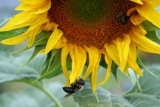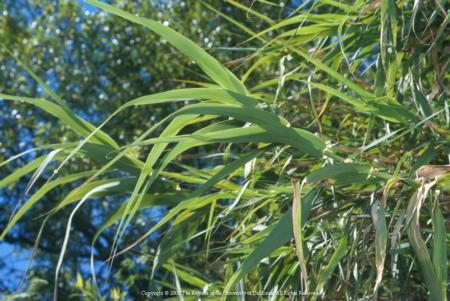Posts Tagged: native species
College students create wildlife habitats in a Wild Campus program
Put together a group of hard-working, do-good college students who care about environmental issues, and you end up with a really “Wild Campus.” At UC Davis, students formed the student-run Wild Campus organization two years ago to conserve wildlife in the greater UC Davis area.
Working with campus experts (such as faculty and staff in the Department of Wildlife, Fish and Conservation Biology) and local environmental and conservation organizations, the volunteer students are improving the habitats for local wildlife and engaging the public in hands-on activities.
This is an extraordinary program that gives the students real-world environmental management skills, along with leadership opportunities and communications experience. Professor John Eadie, Department of Wildlife, Fish and Conservation Biology at UC Davis, said of the Wild Campus program, “Hands-on activity is a huge part of the educational experience.”
In the UC Davis Putah Creek Riparian Reserve, the students are establishing wildlife habitat areas and monitoring populations of amphibians, birds, fish, insects, mammals, and reptiles. They will record the changes over the course of time. Recent work in the riparian reserve (aka “the living classroom”) has included planting native oak seedlings, and installing tule plants to provide protection for the Western Pond Turtle, a species of concern.
A past project — Build a Wild Home Day — involved working with the UC Davis Arboretum on a successful public outreach program to build bird and bat boxes for installation on campus. (Great photos of this program are on the group’s Facebook page.)
The Wild Campus organization has a large cadre of eager and dedicated students who are improvising and making the most of limited resources. However, they are in need of donated field equipment (used equipment is fine) and financial contributions.
Visit the Wild Campus website and Facebook page for a feel-good look at what these ambitious students are doing to improve the environment, along with ways you can help them succeed.
The best of the best
When you drive around Yolo County farmlands, you may see them: a colorful mix of native forbs meant to attract bees and other beneficial insects.
What's a forb? A forb is a broad-leaved herb (as opposed to grass) that commonly grows in a field, prairie, or meadow or alongside farmland.
What's the best mix of native forbs?
Native pollinator specialist Neal Williams, assistant professor of entomology at the University of California, Davis, and research associate Kimiora Ward are researching which native forbs perform the best.
So far, the plants that have performed the best in their Yolo County trials are:
- Phacelia tanacetifolia,known by its common name, lacy phacelia
- Eschscholzia californica, California golden poppy, the state flower
- Lupinus densiflorus, golden lupine
- Lupinus succulentus, hollowleaf annual lupine or arroyo lupine
- Lupinus formosus, summer or western lupine
- Phacelia californica, California phacelia or rock phacelia
- Trichostema lanceolatum, vinegar weed
- Grindelia camporum, Great Valley gumplant
- Helianthus bolanderi, Bolander's sunflower
Take the lacy phacelia. You often see it planted along crop fields where it is known as a good bee plant. It attracts beneficial insects such a honey bees and syrphid flies (aka hover flies), adding a double bonus to the farmer's land. The syrphid fly is a good biological pest; in its larval stage, it gobbles aphids.
The UC Davis researchers' grant, "'Development and Validation of Protocols for Assessing Functioning of Pollinator Habitat Plantings for Agricultural Settings," is funded by the U.S. Department of Agriculture and is aimed at improving pollinator habitat plantings.
This research should prove invaluable.
As Williams said: "Recent declines in honey bee populations and the threat of losses in pollination service to economically important crops has raised awareness of the importance of restoring and conserving native bee diversity and abundance."

Honey bee heading toward lacy phacelia. (Photo by Kathy Keatley Garvey)
How does climate change impact plants?
All bets are off in terms of what will happen with plant species migration and crop production as the climate changes globally.
A common assumption has been that native plants and animals would “move,” or migrate, to higher elevations as temperatures rise, to maintain their “preferred” temperatures, but a new report by Jonathan Greenberg at UC Davis, shows that many California plant species moved downhill over the past 70 years.
According to Greenberg, “While the climate warmed significantly in this period, there was also more precipitation. These wetter conditions are allowing plants to exist in warmer locations than they were previously capable of.”
According to the news release summary:
“Many forecasts say climate change will cause a number of plants and animals to migrate to new ranges or become extinct. That research has largely been based on the assumption that temperature is the dominant driver of species distributions. However, Greenberg said the new study reveals that other factors, such as precipitation, may be more important than temperature in defining the habitable range of these species.
“The findings could have global relevance, because many locations . . . have had increased precipitation in the past century, and global climate models generally predict that trend will continue, the authors said.”
Many studies are showing that climate change is impacting plant and animal species, but because of the overlapping influence of so many factors, including temperature, precipitation, and elevation, and even factors such as increases in smog and carbon dioxide, it is too early to predict precisely how climate change will impact native species . . . and agricultural crop production.
Here are some UC Davis news summaries in just the last year on the impact of climate change on plant and animals species:
- Plants moved downhill, not up, in warming world – news summary
- Climate change impact on mountain plants at low elevations – news summary
- Warmer ocean waters favor aliens over natives – news summary
- Warming climate means harsher smog – news summary
- Rising CO2 levels threaten crops – news summary
- Changes in agriculture needed as world warms – news summary
- Climate tipping points may give no warning – news summary
- Butterflies reeling from impact of climate – news summary
Invasive reed arundo is choking state waterways
In the early 1800s, European immigrants introduced the fast-growing giant reed arundo (Arundo donax) into California to use the canes for musical instruments. The plants were also used for erosion control and the reeds used for thatched roofing. However, it has since naturalized and become a serious pest in the state's natural waterways.
Arundo can grow at a rate of four inches per day and can reach heights of 30 feet. It reproduces and spreads when sections of the stem or root break off and float downstream.
Dense stands of arundo displace native riparian species. The plant requires a significant amount of water, reducing fish, wildlife and people. In addition, clumps of arundo and the soil around their roots can break off, causing streambank erosion. The clumps can also create channel obstructions that lead to flooding.
Arundo is highly flammable and can quickly carry fire along waterways. After a fire, arundo quickly grows back from its roots. With other nearby plants burned by fire, arundo can spread even more quickly, leaving no room for native plants to recover.
Californians can help reduce the spread of arundo by taking the following actions:
- Learn more about arundo, including how to identify it
- Report sightings to local conservation groups
- Join local eradication efforts or help to start one
- If you own land with an arundo infestation, request help and provide access for control efforts

arundo







